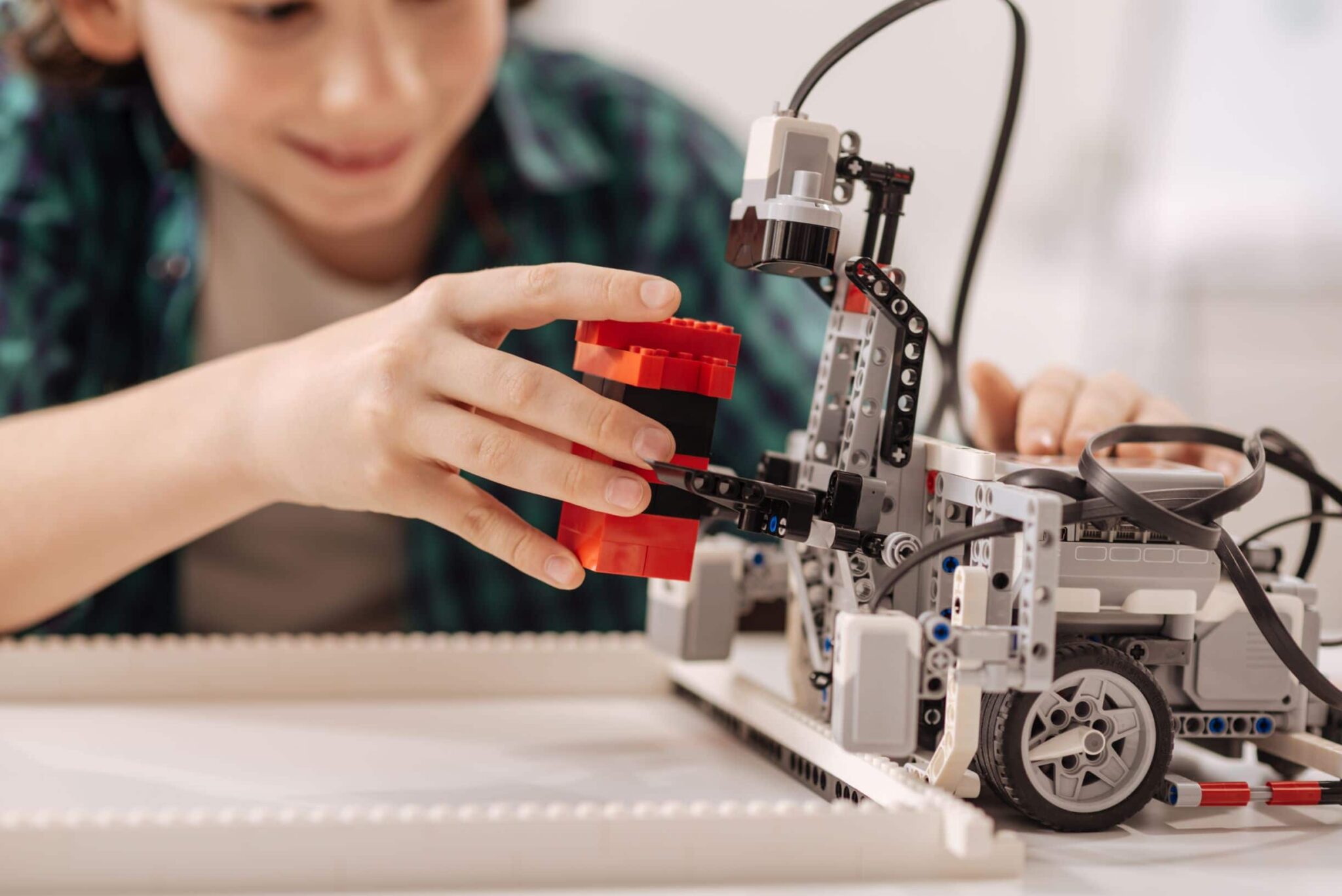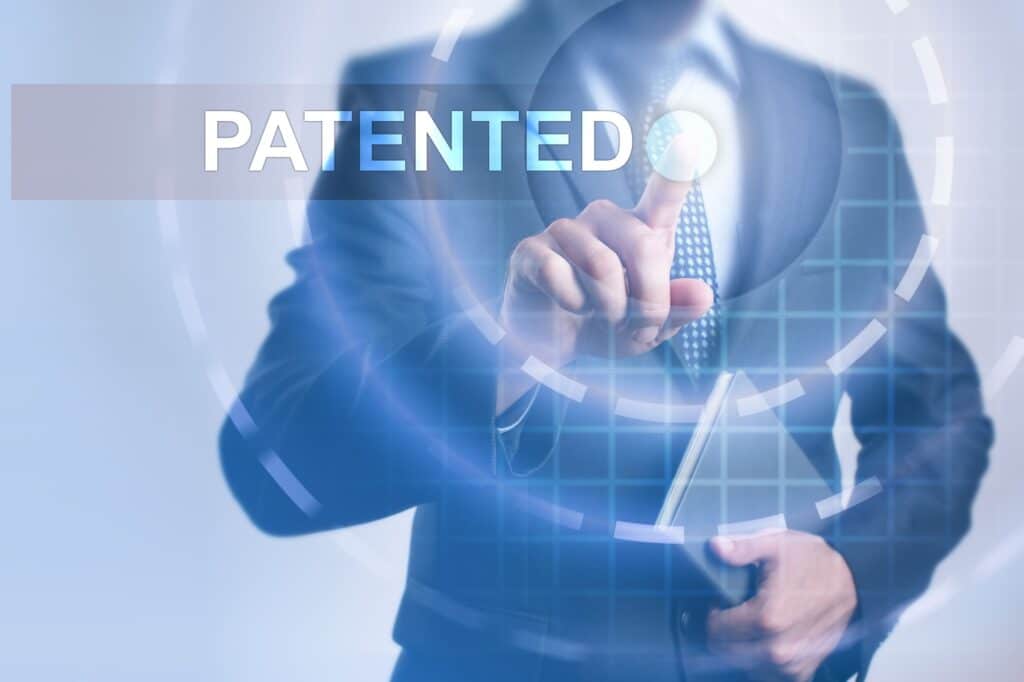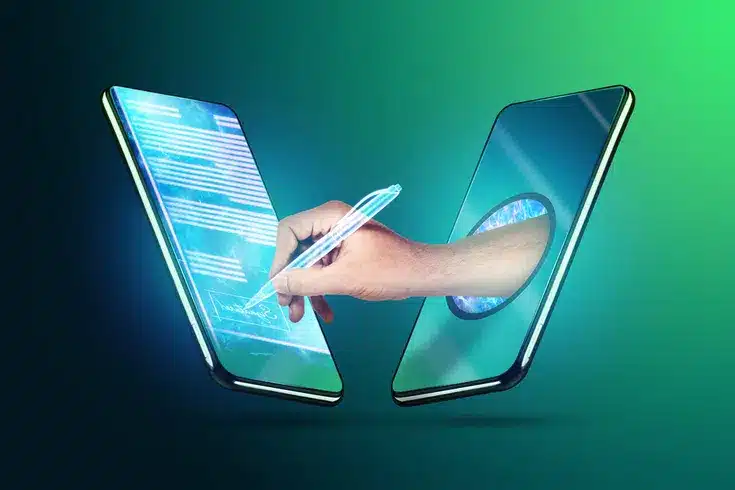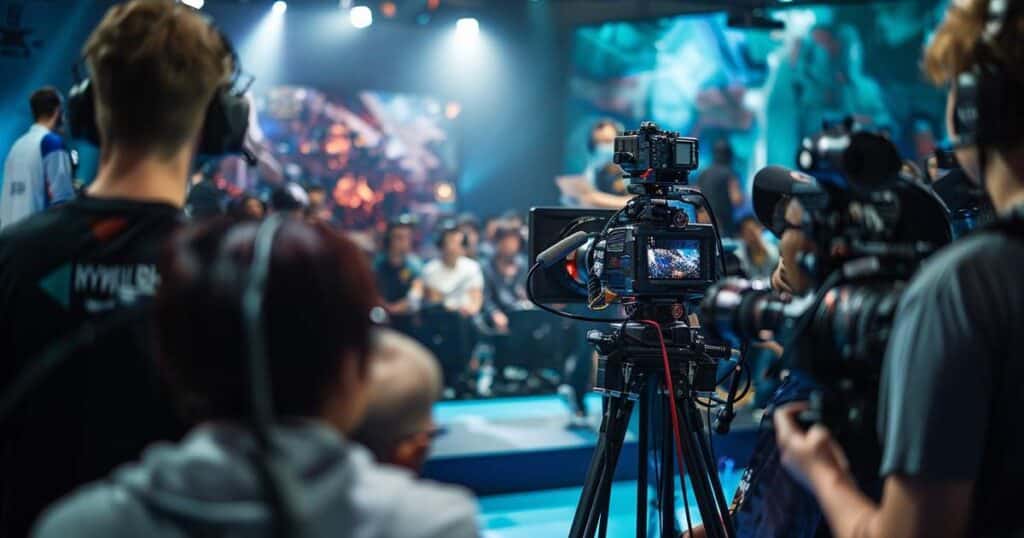Benefits of Patents and Patent Acquisition: Insights from a Lawyer

When we hear about patents and patent rights, we often imagine large-scale inventions like blue light-emitting diodes. However, in reality, most of the registered patents (approximately 195,000 cases registered in the fiscal year 2018) are for ‘minor’ inventions.
For instance, Echigo Confectionery, the second largest company in the industry, claimed that Sato Foods Industries (Sato Foods), the industry leader, was infringing on their patent rights. They sought to halt the production and sales, and demanded compensation for damages. The patent registered by Echigo Confectionery was for a method of ‘controlling the surface from breaking when inflated by baking, by making a longitudinal (horizontal) cut on the side of the cut mochi’ (Intellectual Property High Court, interim judgment on September 7, 2011).
Even technologies or programs created by small business owners can obtain patent rights, as long as they meet the conditions stipulated by law. So, what exactly is a patent, and what are the benefits of obtaining patent rights?
Purpose of the Patent System
The patent system is a system in which the state grants a right, known as a patent right, to a person (or their successor) who has made an invention that contributes to the development of industry. This right allows them to exclusively implement their invention for a certain period of time, in exchange for making their invention public.
Article 1 of the Japanese Patent Law (Purpose)
The purpose of this law is to encourage invention and contribute to the development of industry by promoting the protection and utilization of inventions.
Thus, the patent system aims to promote the protection and utilization of inventions, but what exactly does an invention refer to?
What is an Invention?
Article 2 of the Japanese Patent Act defines an “invention” as follows:
Article 2 (Definition) of the Japanese Patent Act
In this law, “invention” refers to the high-level creation of technical ideas utilizing natural laws.
In other words, an invention under the Patent Act must satisfy four requirements:
- Utilization of natural laws
- Being a technical idea
- Being a creation
- Being of a high level
We will explain each of these in turn.
Utilization of Natural Laws
Natural laws refer to principles that exhibit physical, chemical, and biological regularities found empirically in nature. They do not include man-made laws such as ideas for asset management. Also, since an invention must “utilize natural laws,” the “discovery” of natural laws themselves, like Einstein’s theory of relativity, does not constitute an invention. Furthermore, anything that contradicts natural laws does not qualify as an invention. For example, an “invention” that “demonstrates that the law of conservation of energy is not a natural law, breaks Torricelli’s law, and provides the first perpetual motion machine in human history” was ruled not to be an invention because “the law of conservation of energy is a universal law of current science and technology and is common knowledge” (Tokyo High Court, March 27, 2002).
It should be noted that the requirements of “utilizing natural laws” and “being a technical idea” are often inseparable in practice, and it is acceptable to consider them as a single requirement for an invention.
Being a Technical Idea
An invention is considered to be a “technical idea” that recognizes the causal relationship between a “technical configuration” and a “technical effect.” In other words, “if you use the technical means of ○○, you can achieve the technical effect of □□.” The requirements for this include the “reproducibility requirement,” which means that “a person with ordinary knowledge in the relevant technical field can achieve the intended technical effect by repeated implementation,” and the “concreteness/objectivity requirement,” which requires a certain degree of concreteness and objectivity in the technical configuration.
In a lawsuit seeking the cancellation of a decision of non-establishment of a request received from the Patent Office, the plaintiff, who had filed a patent application for an invention called a “two-way dental treatment network,” was denied the request. The Intellectual Property High Court ruled that the invention was a “creation of a technical idea utilizing natural laws” because it could be understood as providing technical means to support dental treatment based on a computer, equipped with a “network server with a database,” a “communication network,” a “computer installed in a dental treatment room,” and a “device capable of image display and processing” (Intellectual Property High Court, June 24, 2008).
Being a Creation
Something that merely finds existing things is a “mere discovery,” not a “creation,” and therefore cannot be called an invention. Creation means creating something new through human action, so an invention must be something newly created by the inventor.
However, in Japan, if the usefulness of a chemical substance or microorganism artificially isolated from a natural substance is discovered, the chemical substance itself is treated as a created thing and qualifies as an “invention.” Also, “use inventions” are considered to be “inventions based on the discovery of an unknown attribute of a known substance and the finding that this attribute makes the substance suitable for use in a new application,” and they qualify as creations.
Being of a High Level
Article 2, Paragraph 1 of the Utility Model Act defines a “device” as “a creation of a technical idea utilizing natural laws.” The term “high level” in the definition of an invention is provided to distinguish it from a “device” and to distinguish between patents and utility models.
The utility model system also protects devices, which are “creations of technical ideas utilizing natural laws” (Article 2 of the Utility Model Act), and are essentially the same as patents. However, it protects “those related to the shape, structure, or combination of an article” (Article 3 of the Utility Model Act). Therefore, methods are not covered, and unlike the subject of protection under the Patent Act, it does not require the creation of a technical idea to be of a high level.
In the utility model system, the substantive content of the application is not examined, and those that meet certain basic requirements are registered. It is a system that allows for the protection of small inventions, also known as devices, more quickly and easily than the patent system.
Patent Requirements for Inventions

Patent rights, like utility model rights, design rights, and trademark rights, are granted by applying to the Patent Office, undergoing examination, and receiving registration.
For an invention that has been applied for a patent to be patented, it must meet the following requirements:
- It must be industrially applicable (Japanese Patent Law Article 29, Paragraph 1, Proviso)
- It must be a novel invention (Japanese Patent Law Article 29, Paragraph 1)
- It must have inventiveness (Japanese Patent Law Article 29, Paragraph 2)
- It must be a prior application (Japanese Patent Law Article 39)
Furthermore, inventions that may harm public order, morality, or public health are considered inventions that fall under non-patentable reasons (Japanese Patent Law Article 32).
Potentially Useful in Industry
The patent system is designed to promote industrial development (Article 1 of the Japanese Patent Act), and inventions that cannot be used in industry are deemed unnecessary for patent protection and are not eligible for a patent.
Article 29 of the Japanese Patent Act
An inventor who has made an invention that can be used in industry can obtain a patent for that invention.
The term “industry” in the Japanese Patent Act is interpreted broadly, including not only manufacturing but also mining, agriculture, fisheries, transportation, telecommunications, and so on. Furthermore, business-related inventions are being patented from a wide range of industrial fields, including finance, insurance, advertising, and virtually all other industries.
On the other hand, inventions that are only used for academic or experimental purposes, or inventions that cannot be used in business, do not fall under this category. Inventions that are practically impossible to implement (for example, a method to prevent the increase of ultraviolet rays by covering the entire surface of the earth with UV-cut glass) also lack industrial applicability. Inventions related to surgical, therapeutic, or diagnostic methods for humans are also ineligible for patenting on the grounds that they lack industrial applicability.
A Novel Invention
Even if the inventor believes their invention to be a new technology, if the invention is the same as existing technology, it should not be granted patent rights in light of the purpose of the Patent Act, which is to contribute to the development of industry.
Japanese Patent Act Article 29, Paragraph 1
An inventor who has made an invention that can be industrially applied can obtain a patent for that invention, except for the inventions listed below.
1. Inventions that were publicly known in Japan or abroad before the patent application
2. Inventions that were publicly practiced in Japan or abroad before the patent application
3. Inventions that were described in publications distributed in Japan or abroad before the patent application, or inventions that became available to the public through telecommunication lines
The first term, “publicly known invention” (known invention), refers to an invention whose content is known to the public, not being a secret to unspecified persons. Even if many people who have a duty of confidentiality know about it, it does not qualify as a known invention. However, when a person without a duty of confidentiality becomes aware of it, even if it’s just one person, it becomes a known invention. The intention of the inventor or applicant to keep it secret is irrelevant.
The second term, “publicly practiced invention” (used invention), refers to an invention that was practiced in a situation where the content of the invention is publicly known or likely to be known. For example, it is assumed that this would apply if unspecified persons were allowed to observe the manufacturing process of a certain product in a factory.
The term “publications” in the third term, “distributed publications”, refers to documents, drawings, and other similar information media that have been reproduced for the purpose of being made public through distribution. “Distribution” means being placed in a state where unspecified persons can see it, and it is not necessary for someone to have actually seen the publication.
Furthermore, the term “inventions that became available to the public through telecommunication lines” generally refers to those on the Internet. “Available to the public” means being placed in a state where unspecified persons can see it, and it is not necessary for someone to have actually accessed it.
Inventiveness
Considering the purpose of the Patent Law, which aims to promote industrial development, granting exclusive rights such as patents to inventions that could be easily made by ordinary technicians not only does not contribute to technological progress, but also hinders it. The purpose of Article 29, Paragraph 2 of the Japanese Patent Law is to exclude such inventions from being granted patents.
Article 29, Paragraph 2 of the Japanese Patent Law
When an invention could have been easily made by a person with ordinary knowledge in the field of technology to which the invention belongs prior to the patent application, the invention cannot be patented, regardless of the provisions of the preceding paragraph.
Inventiveness is an extremely important requirement in determining whether an invention can be patented. Therefore, it is often the most contentious issue in patent disputes due to its difficulty in judgement.
The method of determining the presence or absence of inventiveness is carried out in stages according to the Examination Guidelines 26 of the Japanese Patent Office, which include “Recognition of the invention in the application”, “Recognition of the cited invention such as the main cited invention”, “Comparison”, and “Logical reasoning (Evaluation of differences)”.
Priority Principle
Since patent rights are exclusive, only one patent is granted for one invention (the principle of one invention, one patent, and the principle of excluding duplicate patents). In the case where two or more applications are made for the same invention, the patent is granted to the application that was filed first.
Japanese Patent Law Article 39 (Priority)
When two or more patent applications are filed on different days for the same invention, only the first patent applicant can receive a patent for that invention.
In the case where two or more applications are made for the same invention, there are two principles regarding which application should be granted the patent: the first-to-invent principle, which grants the patent to the person who invented first, and the first-to-file principle, which grants the patent to the person who filed the application first, regardless of the order of invention. In Japan, the first-to-file principle is adopted.
Specifically, the Japanese Patent Law stipulates as follows:
- When two or more patent applications are filed on different days for the same invention, only the first patent applicant can receive a patent. (Japanese Patent Law Article 39, Paragraph 1)
- When two or more patent applications are filed on the same day for the same invention, only the applicant determined by consultation among the patent applicants can receive a patent. (The same Article, Paragraph 2)
- Even if the invention is identical to the invention subject to a utility model registration application, it is treated in the same way. (The same Article, Paragraphs 3 and 4)
What are the Benefits of Obtaining a Patent?

Patents, which possess such personalityistics, can potentially bring the following three benefits to the business activities of companies or individuals who hold them.
Legally Exclude Imitations by Other Companies
The Japanese Antimonopoly Act aims to “prohibit private monopolization, unreasonable restraint of trade and unfair trade practices, prevent excessive concentration of economic power, eliminate unreasonable restraint of any kind of business activity by combination, agreement, etc., promote fair and free competition, encourage the creativity of entrepreneurs, invigorate business activities, raise the level of employment and real income of the people, and thereby ensure the interests of general consumers and promote the democratic and sound development of the national economy” (Article 1 of the Antimonopoly Act). However, Article 21 (Exercise of Intellectual Property Rights) states that “the provisions of this Act shall not apply to acts recognized as the exercise of rights under the Copyright Act, Patent Act, Utility Model Act, Design Act or Trademark Act”.
In other words, allowing a patent holder to monopolize an invention through patent rights is considered an exception to the application of the Antimonopoly Act.
When a product resulting from technological development is introduced to the market, the content of the technology is disclosed, exposing it to the threat of imitation by other companies. However, if you obtain a patent for the product, you can legally exclude the sale of imitations by other companies.
The patent holder can file a lawsuit for an injunction (Article 100 of the Patent Act) or a claim for damages (Article 709 of the Civil Code) against the infringement of the patent right.
An injunction lawsuit is a request to stop or prevent the infringement of one’s patent right against a person who infringes or is likely to infringe on it. If the injunction lawsuit is granted, the defendant must stop manufacturing the imitation product, and can also be required to dispose of the imitation product and remove its manufacturing facilities.
A claim for damages is a request for compensation for damages caused by the infringement of the patent right to the person who caused the damage to the patent holder. If the claim for damages is granted, the person who manufactured or sold the imitation product must pay the patent holder an amount equivalent to the damage suffered by the patent holder.
This will make it hesitate to sell imitations at the risk of being sued for patent infringement by someone other than the patent holder.
Can Earn Licensing Revenue
Even if you can monopolize an invention by obtaining a patent, it is not always necessary to do so. The person who obtains the patent can also make a contract with other business operators saying, “You can use my invention if you pay me”. This is the so-called “license agreement”. In the case of a business owner with limited financial resources, it is often more rational to make a license agreement with a large corporation and receive a portion of the profits than to manufacture the product in-house. This is because you can avoid bearing the costs associated with the manufacture and sale of a product incorporating a patented invention, and you can also reduce the risk in case the product is not accepted in the market.
The Patent Act recognizes the right of a person other than the patent holder to implement the patented invention as a business, and this right is called the implementation right, which includes the exclusive implementation right (Article 77 of the Patent Act) and the ordinary implementation right (Article 78 of the Patent Act).
In a patent license agreement, the patent holder is called the licensor and the other party to the contract is called the licensee. The contract form of a patent license agreement is divided into an exclusive implementation right license agreement and an ordinary implementation right license agreement. An exclusive implementation right license agreement is a type of contract where only the licensee can implement the patented invention, and even the licensor, who is the patent holder, cannot implement the patented invention. On the other hand, an ordinary implementation right license agreement is a type of contract where both the licensor and the licensee can implement the patented invention.
In either contract form, the conditions such as the area where the licensee can implement the patented invention, the period during which the licensee can implement it, the method of paying royalties, etc., can be freely determined under the agreement of both parties.
Can be Utilized for Marketing
The Patent Act provides that “the patent holder, exclusive licensee or ordinary licensee shall endeavor to affix a patent indication to the patented article or its packaging in accordance with the provisions of the Ordinance of the Ministry of Economy, Trade and Industry” (Article 187 of the Patent Act).
This patent indication is not obligatory but only “must be endeavored”, but many companies and others selling patented products actively display “patent obtained” or “patent No. ○○○”. By attaching a patent indication to a product, it is expected to impress customers that the product is backed by high technical capabilities and to draw out their desire to purchase. It can also serve as a material to externally appeal the company’s technical capabilities, and more importantly, it can create an image that “it is a reliable company that can obtain a patent”. Even if it only says “patent pending”, it can enhance the company’s image and be useful for marketing.
Summary
Patents are not always granted upon application, and there are many instances where registration is denied for various reasons.
In such cases, the applicant is notified with a ‘Notice of Reasons for Rejection’ from the Japanese Patent Office, which details why the application is not recognized as a patent. Although the applicant can argue against this through written documents, it is necessary to thoroughly check in advance with an experienced attorney whether the requirements are met or not.
Category: General Corporate
Tag: General CorporateIPO





















